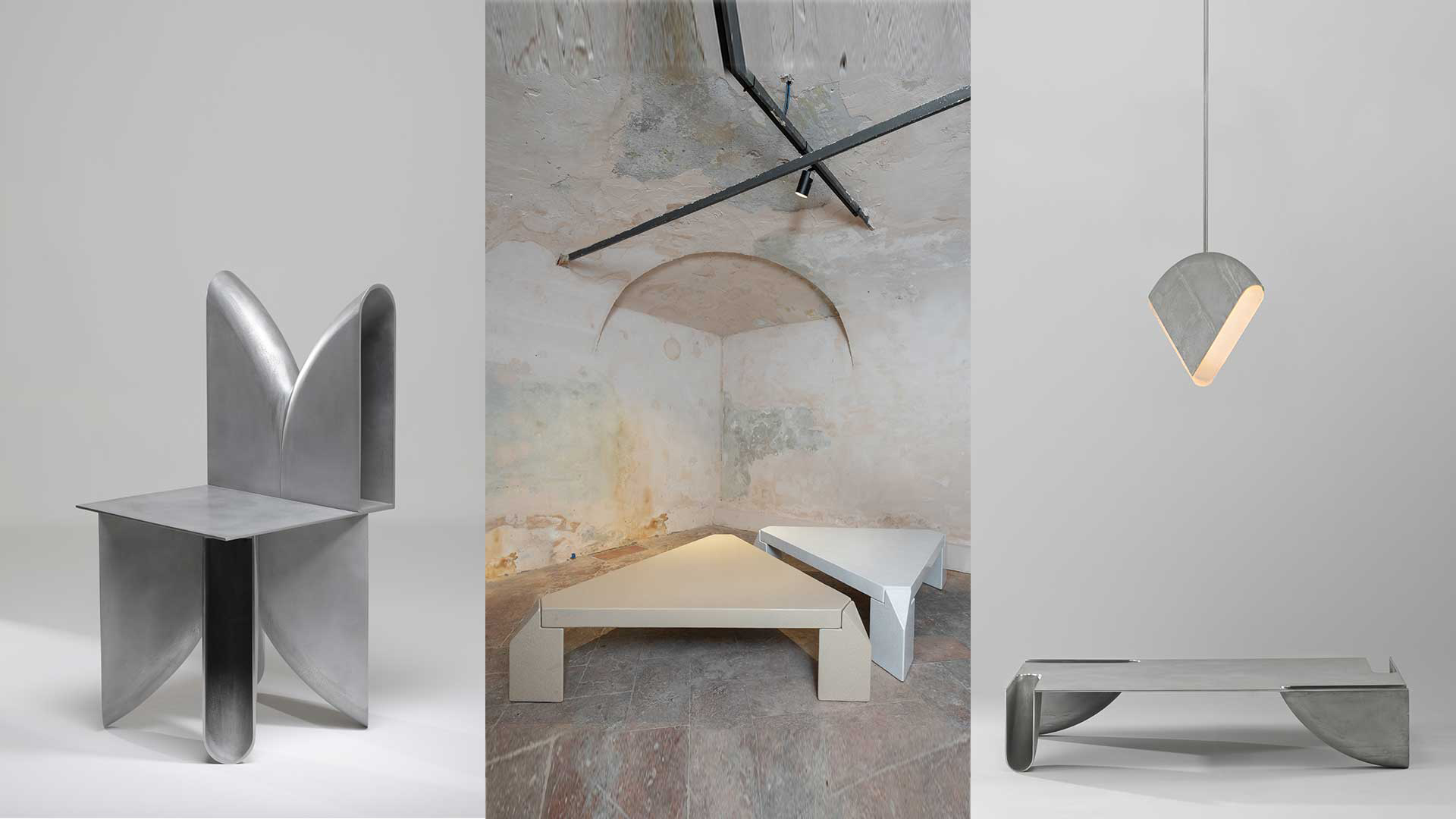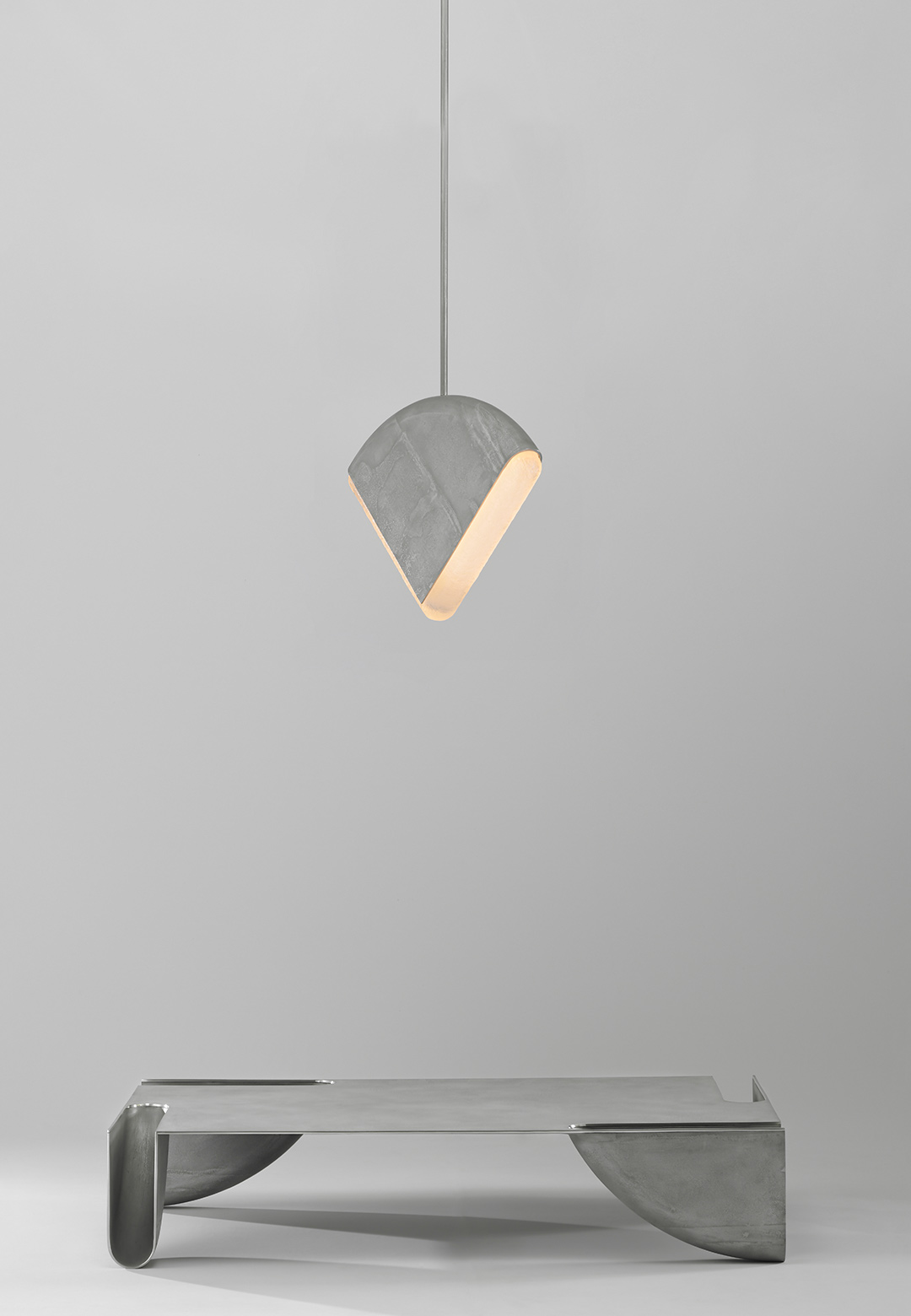Kazuo Shinohara is deemed one of the most seminal architects of Japan’s postwar generation. The Japanese architect spoke of architecture as art, his purist work infused with an underlying formalism—concocting tangible poetry. His oeuvre is poignant because his medium is architecture in its purest form, yet it conveys meaning that is artistically liberated. His approach, which laid the groundwork for the vitality of architecture in Japan today, inspires the journey of Konrad Steffensen and Ronan Le Grand, founders of Corpus Studio. “His approach makes us think about how we, as designers, can blur the boundaries between architecture, design, and art. In light of this, we want to continue to explore architecture through design, using furniture like miniature scale models to develop our ideas and vocabulary and understand tension and dynamics in space,” the designers share.
Corpus Studio is an architecture, interiors and design practice based in Paris. Helmed by Steffensen and Le Grand, the studio crafts spaces, objects, places, stories, atmospheres and environments. The designers opt for a transdisciplinary approach that fuses architecture, decorative arts, art and furniture design to create a unique identity. Their oeuvre showcases a characteristic use of volumes, light, shadows, shapes, proportions, textures and materiality to create poetic spaces and comfortable atmospheres that meet everyday needs. Their furniture collections BB and Apollo embody this ethos in two diverse expressions. “Our design philosophy is founded on creating compelling and poetic spaces and objects with a sense of conviction where there is an authentic and driving idea behind each design. We embrace juxtaposition and contrast, seeking harmony and nuance between opposing forces,” the French designers say.
BB collection
The BB collection encapsulates a chair design, a suspension lamp design and a coffee table in aluminium. The collection draws inspiration from reflections on architectural forms, tectonics and composition. With the most basic structural forms such as a simple wheel as origin, the designers forged, divided and assembled the aluminium to contrive a series of functional objects. Repetition of the same shape in each product design, and throughout the collection, is used as a poetic device—that ties the objects together—but it is also an economy of means. “By working within the limits of one simple shape, we were able to use its structural versatility across other designs. In some ways, this is similar to Utzon’s fundamentally pragmatic yet aesthetic orange peel solution for the Sydney Opera House,” Steffensen and Le Grand explain.
During the design evolution of the collection, Steffensen and Le Grand were drawn to aluminium for its strength and lightweight properties, achieving the sculptural wheel-like shape with the thickness of sheet metal posed a challenge. “Most assume the pieces are crafted from folded sheet metal, but they are actually produced by sand casting,” the designers elaborate. A hand-carved wooden mould is used to form a resinous sand negative in which liquid metal is cast. The final assembly of the components was accompanied by another set of intricacies—every design taking at least three prototypes to sign with the studio’s vision. “There is an intrinsic game of geometry to the designs, so it was important for us to underline this with pure forms, clean lines and neat junctions,” Steffensen and Le Grand state.
Apollo collection
The Apollo collection is enrobed in “the duality between fragility and monumentality,” it is table designs conceived in enamelled lava stone. Comprising a coffee table and a side table, the collection took form on the designers’ trip to Greece. Their visit to the temple of Apollo brought them vis a vis the allure of once magnificent monumental vestiges now crumbling ruins—the shadows of their glory persisting through time. This juxtaposition of fragility and monumentality, and its beauty, sowed the seeds of Apollo's identity—a poetic dichotomy. “On one hand, there is a fragility that is expressed through the glaze finish, which we perceive as delicate because of cognitive associations with ceramics. On the other hand, there is an eternal monumentality of the three-sided columns, whose proportions and expressed structural role echo that of an ancient temple,” the furniture designers point out.
Lava stone, the medium employed to achieve the designs, is quite dense; this pushed the studio to rethink and seek solutions to reduce the mass while preserving the monumentality of the designs. “As the coffee table and the floor lamp are larger in size, the other challenge we faced was how to glaze the surfaces evenly and within the constraints of the size of our artisan’s kiln. We eventually found a solution through trial and error,” the product designers share. Working around the size of the kiln also led to the development of a modular design system harnessing the three-sided shape of the table. This allows users to personalise their space by arranging multiple tables to create various shapes and mix different colours. Talking about the future of the designs, Steffensen and Le Grand share, “We have been experimenting with some interesting glazing effects and colours on a small scale with our artisan, so we are planning some new tests to try them out on larger surfaces and see if they are feasible for furniture pieces.”
Corpus Studio’s design language involves playing with volume, light, shadow, and materiality, their language is particularly drawn to architectural forms that are monolithic or where proportion plays a central role in the sculptural and compositional expression. This propensity is reiterated in both their furniture collections where functionality and compelling creativity collide. While the designers continue to refine their designs and breathe life into new ones, they are also actively involved in several architectural and interior design projects. Concisely articulating their ethos, the co-founders of Corpus Studio say, “We move towards an appreciation of performative architecture and design through aesthetic acts of assembly. By highlighting structure and its connections, we feel there is a dramatic quality that can evoke emotion, incite symbols through cultural associations, and force us to ask questions about our surroundings.”






 Sign in with email
Sign in with email










What do you think?